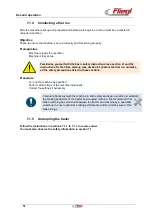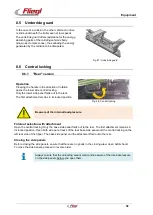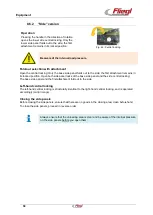
Use and operation
50
7.1.3
Coupling the trailer
Always follow the instructions in section 4.2 for the coupling and uncoupling
process and read through this section carefully before first-time start-up.
-
Move the towing device of the towing vehicle or the drawbar eye of the trailer to the correct
height. See section 7.1.2.
-
Open the towing device on the towing vehicle.
-
Move the towing vehicle backwards until the drawbar eye engages in the towing device.
-
Secure the towing vehicle against rolling away (parking brake) and turn off the engine.
-
Check whether the towing device is engaged.
-
Establish the electrical connections and connect the service brake.
-
Establish the compressed air supply between the towing vehicle and trailer, if applicable.
(See section 4.2.3)
-
Establish the hydraulic connections between the towing vehicle and trailer.
Hydraulic connections
Connect all hydraulic lines on the towing vehicle. For labelling to identify connection points,
see the stickers on the vehicle and on the couplings.
Check all hydraulic lines for damage and leaks on a daily basis.
Replace all hydraulic hoses completely every 6 years.
Releasing the parking brake
Overrun brake version:
Press in the button at the tip of the actuating lever. Move the lever towards the side panel
while keeping the button depressed. If the actuating lever features an extension, the button
is triggered by the extension and the brake is released.
Parking brake version:
To release the parking brake on the trailer, apply the handbrake lever a little (drawbar eye
direction). It will trigger itself. Then reset the lever arm.
-
Remove the wheel chocks and stow them.
-
Start the towing vehicle engine.
-
Check the service brake and parking brake before starting work.
The parking brake is applied by pulling in the direction of the drawbar eye.
The PB is released by letting down the handbrake lever.
Road traffic regulations must also be observed when using the brakes
(including the parking brake).
















































